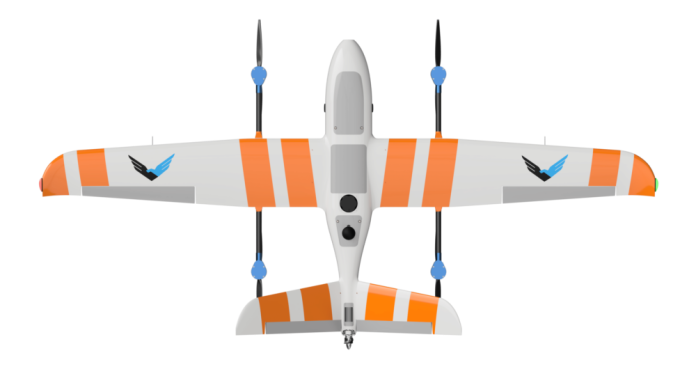The drone world is set to undergo major transformations by 2025.
New Rules and the BVLOS Journey
Changes are coming with the FAA Reauthorization Act of 2024, pushing toward Beyond Visual Line of Sight (BVLOS) drone operations.
“Following on the FAA Reauthorization Act of 2024, in 2025 I’m looking to see increased pressure on a move towards BVLOS operations through rulemaking rather than waiver-based operations. The groundwork for that has been under development for a long time, it will be an exciting time when it comes to fruition, opening up room for the next disruptive technologies in the drone industry in the US.” – Sam Knight, Vice President of Product Management & Remote Pilot, Blue Marble Geographics.
Using BVLOS could really change how drones are used in business and emergency situations.
The Rise of AI and Automation
In 2025, artificial intelligence (AI) and automation will greatly boost drone capabilities, reducing human involvement and speeding up tasks.
“AI at the edge will be essential for asset intelligence as BVLOS drone operations expand and data volumes grow. By enabling near real-time data processing, AI can quickly transform raw data into actionable insights. This will be key to keeping pace with the increasing demand for timely information.” – Trevor Perrott, CEO & Co-Founder at Censys Technologies.
We think AI-driven autonomy will make drones vital in logistics and safety tasks.
This technology will help in logistics, inspections, and public safety, making drones more useful than ever.
Security and Supply Chain Concerns
With global tensions rising, protecting drone supply chains is crucial. The Countering CCP Drones bill will limit Chinese-made drone components.
“2025 is sure to be another dynamic year for the UAS/UAV industry. We expect to see the effects of the Countering CCP Drones bill extend beyond specific platforms like DJI, with even basic components becoming more restricted for the West as trade tensions increase and national security imperatives take center stage here in the US. Additionally, as other countries begin to show more effective UAS adoption, pressure on the DoD to reset their UAS strategy will mount, and we believe consensus will build around establishing an NDAA-compliant standard other than DIU’s Blue program.” – Peter Fuchs, Co-founder and CEO of Ascent AeroSystems.
Switching to NDAA-compliant drones made locally could reshape competition, spurring investment in versatile aircraft.
Integrating Drones into Airspace
Expanding urban air mobility and commercial drone use makes Unmanned Traffic Management (UTM) systems vital for airspace integration.
“In 2025, the drone industry will see increased uptake and significant progress toward commercial rollouts of certified UTM and U-space systems, enabling seamless integration of drones into shared airspace. Regulatory frameworks like EASA’s U-space will set global benchmarks, driving advancements in safety, automation, and interoperability.” – Amit Ganjoo, Anra Technologies.
These frameworks will create rules for safe drone operations, influencing worldwide standards.
Drones and the Environment
Drones are being used more for environmental tasks, like watching carbon emissions and helping sustainability projects.
“There is definitely a strong commitment from global agencies, governments, and corporations to ambitious net-zero frameworks, demand for carbon credits is growing at a fast pace, and I think Trump sees an opportunity so he will not block this trend. In parallel, UAV technology is rapidly gaining traction as a crucial tool for delivering precise, real-time data on emissions, environmental measurements, etc., ultimately strengthening the credibility and impact of carbon offset initiatives. The sheer scale of these collective commitments underscores a market environment primed for UAV companies to specialize in this field.” – Sukhee Cho, Vice President at Hojung Solutions.
As carbon markets change, drones will give important data for eco-friendly efforts.
The Autonomous Drone Future
“With the passing of the FAA Reauthorization Act last year, 2025 is poised to be a landmark year for the drone industry. Beyond Visual Line of Sight (BVLOS) will become a reality for both commercial and public operations, unlocking the next wave of innovation. This, coupled with expedited waiver processing, will accelerate opportunities in autonomous drone operations, drones as first responders (DFR), and other advancements.” – Brett Kanda, Flock Safety.
Kanda believes better obstacle-avoidance tech and AI navigation will make drones essential for various industries.
Keeping Data Secure
Protecting data remains a big deal for drone mapping systems.
“In 2025, we can expect to see a heightened focus on data security in the mapping industry, driven by different factors such as increased cyber threats, regulatory compliance, and customer trust. By prioritizing data security, companies can ensure the confidentiality and integrity of their valuable mapping data. Keeping the processing and storage loop local will continue to be the most trusted means of maintaining security.” – Eric Andelin, Senior Workflow Specialist at SimActive.
Ensuring data safety will be crucial as reliance on drone data grows.
People’s Views and Drone Laws
Public opinion about drones will influence future regulations.
“I predict a new public fascination with drones and drone technology, requiring the industry to vastly improve communication or face unprecedented levels of new regulations as science fiction and misunderstanding is more prevalent in the current public lexicon of UAS than actual science and objective reality. The UAS industry will face its first existential crisis.” – Dr. Will Austin, WarrenUAS.
Clear messaging on drone benefits and safety is key to easing restrictions.
Looking Forward
2025 holds big changes for drones, spurred by regulation, tech advances, and global shifts. From BVLOS to AI, security issues, and eco-monitoring, drones will keep evolving industries and society. Companies must adapt swiftly to remain competitive in this shifting landscape.
